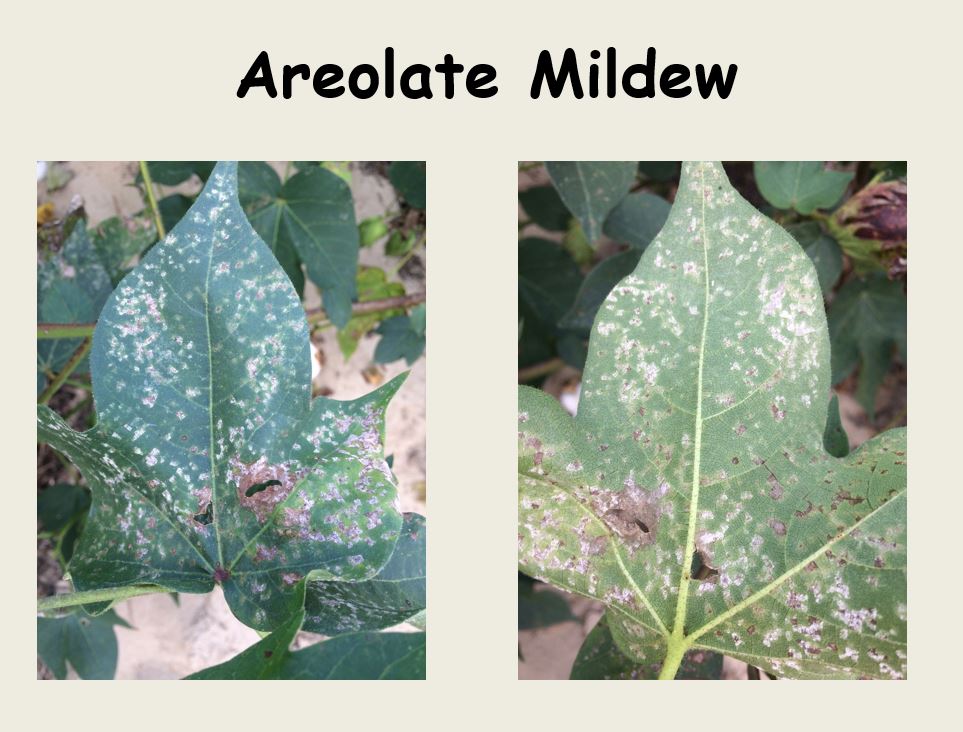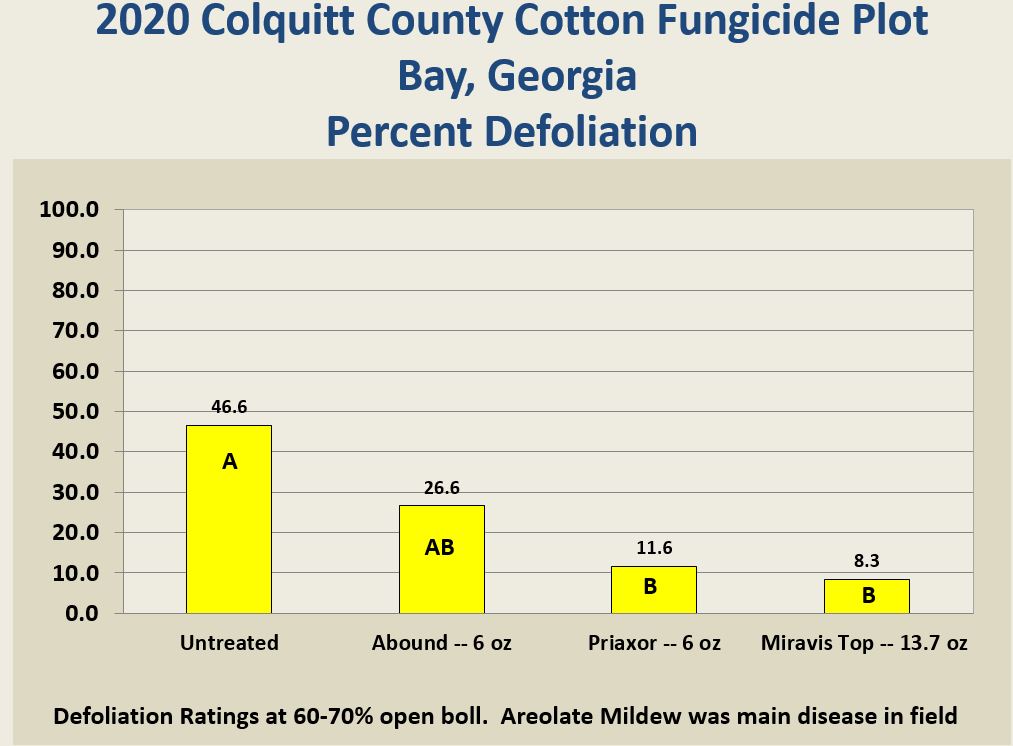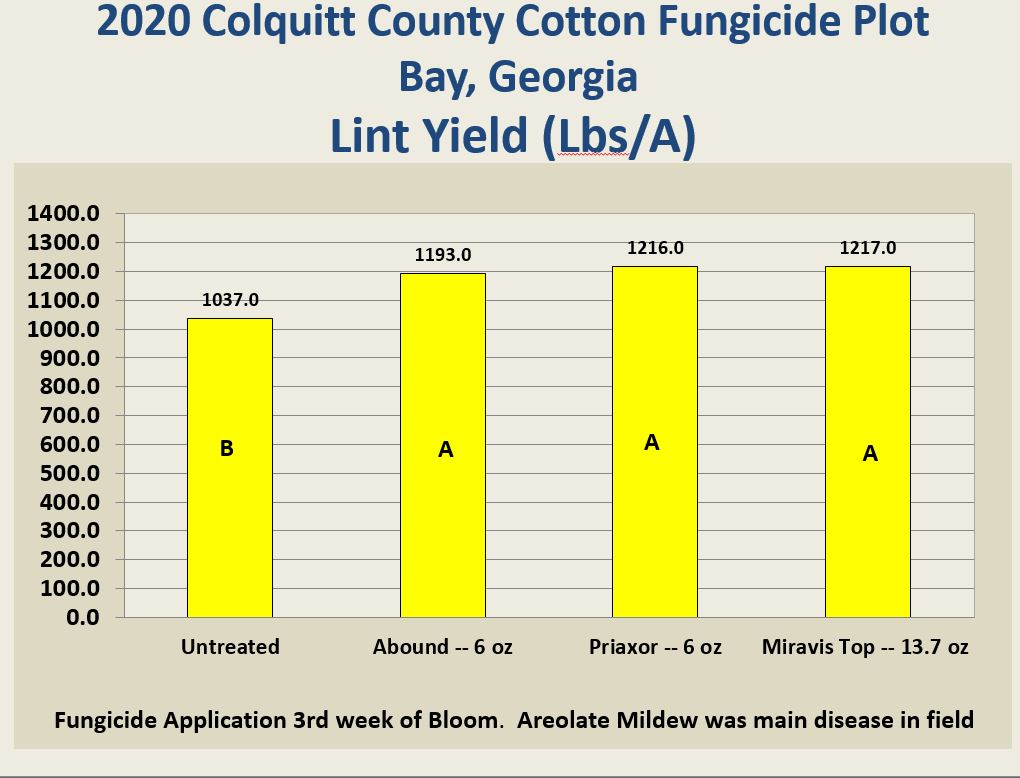The last couple of years I have received questions about Areolate mildew and how to manage this disease in cotton. Areolate mildew, is caused by the fungal pathogen Ramularia areola. According to Dr. Bob Kemerait, UGA Plant Pathologist, this disease has become more widespread since 2017. The use of fungicides to protect against this disease can be effective in protecting yield, if the disease occurs early enough in the season. The disease is easily identified by the presence of abundant white to gray sporulation on the underside of the affected leaves. The affected leaves often drop prematurely resulting in significant defoliation. Below is an example of Areolate mildew.

In 2020, a field demonstration was initiated in a Colquitt County cotton field that had a history of Areolate mildew. Fungicides were applied during the three week of bloom and each plot was 18 rows wide. Each treatment was replicated three times and DeltaPine 2055 was the cotton variety. The treatments included an untreated check, Abound 6oz/A, Priaxor 6 oz/A and Miravis Top 13.7 oz/A. This field demonstration was rated for defoliation at 60-70% open boll and the plot was taken to yield. Below are the results of this demonstration. This project would not be possible without the help from BASF, Funston Gin, Perryman Farms, and Syngenta.



